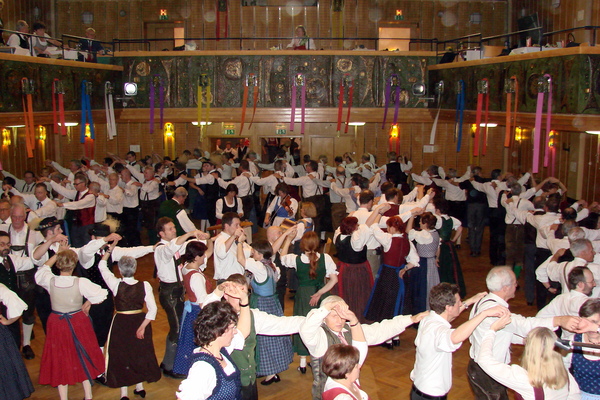The Austrian folk dance movement
Performing arts throughout Austria, inscribed 2010
The Austrian folk dance movement is rooted in the research and collecting activities of a number of people at the end of the 19th century and borrowed from rural traditions that have survived only in fragments. Simultaneously with the systematisation and recording of the various dances, the orientation toward characteristic Austrian dances began. These dances were not only collected and preserved for posterity; they were also increasingly taught and thus saved from extinction.
The traditional dance culture remains vital in many regions of Austria and South Tyrol and thus constitutes a component of the national cultural heritage. The focal point of the self-conception of Austrian folk dance, however, is not performances by professional groups but rather the meeting of people of different age groups and ability levels to dance together. Particular mention should be given to the emergence of a canon of basic Austrian dances that have found their way into the dance repertoire all over Austria and South Tyrol. The dance events of the Austrian folk dance movement usually follow a predetermined order, from the opening dance, called the Auftanz, to the subsequent series of dances and on to the closing circle dance.
Today’s folk dance culture is a primarily urban construct dating from the end of the 19th and the early 20th century that borrowed from rural traditions. The Bundesarbeitsgemeinschaft Österreichischer Volkstanz (Federal Association of Austrian Folk Dance) continuously undertakes projects aimed on one hand at researching the history of folk dance and on the other at creatively passing on knowledge of folk dance, especially to young people. According to the applicant, the great diversity of folk dance is threatened by various developments and endangered in its continued existence: by the rigidity of a particular image of folk dancing and with it the tendency to treat it as a museum exhibit; by the instrumentalisation of folk dance to serve the interests of tourism, politics, business, and regionalism; by increasing perfectionism and professionalisation; and by the potential orientation toward achievement and competition.
Contact
Downloads
- Application form (in German only) 118 KB (doc)
- Expertise Froihofer (in German only) 2 MB (pdf)
- Expertise Köstlin (in German only) 542 KB (pdf)


![[Translate to EN:] © J. Ségur/ZED, with the permission of UNESCO](/fileadmin/_processed_/d/b/csm_Convention-2003-IKE_0832a6a47d.jpg)
![[Translate to EN:] © ÖUK](/fileadmin/_processed_/3/9/csm_P1011318_7eac86402f.jpg)

![[Translate to EN:] © Weitblickfilm](/fileadmin/_processed_/9/8/csm_Workshop_17_2dee1e1fd8.jpg)